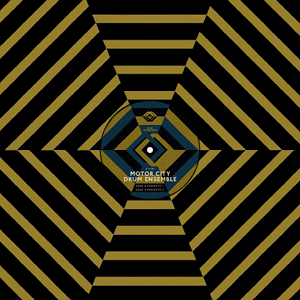Motor City Drum Ensemble Send a Prayer EP
Back in March of 2011, Motor City Drum Ensemble (a.k.a. Danilo Plessow) told Resident Advisor, […]

Back in March of 2011, Motor City Drum Ensemble (a.k.a. Danilo Plessow) told Resident Advisor, “Yeah, definitely. I’m not going to do Raw Cuts seven and eight, or nine and ten, or just stick to a cheap formula to generate money or interest. When you do this, you will be forgotten so soon; you’re just a one-trick pony.” Since those days, Plessow has tried to push away from the sound of his early success by retiring the sampladelic series from his MCDE label in favor of a more diverse set of releases. 2012 was a fairly quiet year for him, but now he’s back with Send a Prayer, an EP that seems like a successor to Raw Cuts in everything but name.
The common element is sampling; this is music that demonstrates Plessow’s long love affair with the art of creative appropriation. “Send a Prayer Pt. 1” kicks things off with his signature combination of lo-fi jazz chords, gritty 909 percussion, and black American vocal snippets. The vibe is moody and churning, with a loosely played trumpet solo in the middle to break up the track’s near-constant drive. All told, it’s a mostly solid cut, but there is a fundamental weakness in his choice of vocal samples. Ignoring the song’s title, running a preacher’s exhortations over gospel wails seems a rather easy and uncreative choice, particularly given Plessow’s demonstrated sampling chops and alleged library. By contrast, “Send a Prayer Pt. 2” does much the same thing, although it buries its samples much deeper in the mix, a choice that lets the instrumentation shine. Listening, it’s hard not to hear a faint interpolation of Moodymann’s “The Day We Lost the Soul” occasionally reflected in Plessow’s chord progression. Given the brilliance of the source, that’s hardly a bad thing.
The odd track out is b-side opener “The Stranger,” which lives up to its name by sounding like nothing else on the EP. Here, Plessow seems to reconfigure the bassline from his “bassline dub” remix of DJ Sprinkles’ “Grand Central Pt. 1” for rather alien ends. Instead of re-exploring the terrestrial environments traversed on both a-side cuts, he goes on a melodic tangent into old-school bleep techno by way of Casiotone spirals and a rhythm seemingly engineered for apocalyptic raving. He’s explored these kinds of themes before, though never so directly.
The release finishes on its highest note with “SP 11.” Reference-heavy like both a-sides, it’s an uptempo collage of a song that’s built around finger snaps and tasteful vocal scatting. Those nearly trademark-worthy Fender Rhodes chords are back, but this time they hover over the rhythm with extended sustain. Beneath them, an almost inaudible disco bassline sample plays out, practically pulling the ears into the hypnotic rotations of the stabs above. The vibe is live, with a structure that owes more to the logic of feeling than any kind of calculated programming—it’s loose without coming across as amateurish, a refreshing combination considering the two are usually mutually exclusive. It might be vintage Motor City Drum Ensemble, but as the saying goes, “If it ain’t broke, don’t fix it.”

